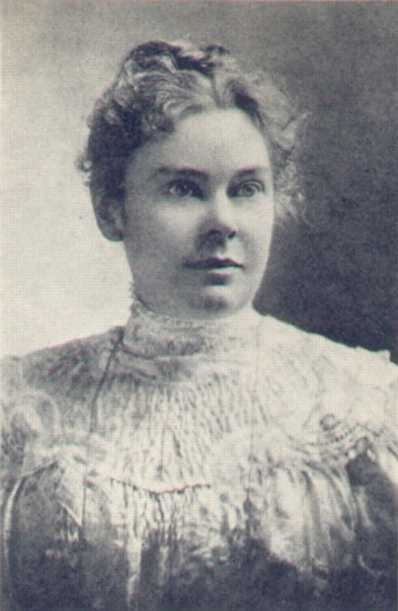Chapter 8. Deviance, Crime, and Social Control

Learning Objectives
8.1. Deviance and Social Control
- Define deviance and categorize different types of deviant behaviour.
- Determine why certain behaviours are defined as deviant while others are not.
- Differentiate between different methods of social control.
- Understand social control as forms of government including penal social control, discipline, and risk management.
8.2. Theoretical Perspectives on Crime and Deviance
- Describe the positivist view of deviance in society including social disorganization theory, control theory, and strain theory.
- Define how critical sociology understands the relationship between deviance, crime, and inequalities of power.
- Explain feminist theory’s unique contributions to understanding the gendered nature of crime and deviance.
- Describe the symbolic interactionist approach to deviance, including differential association theory and labeling theory.
- Identify and differentiate between different types of crimes.
- Distinguish three different measures of crime statistics.
- Explain the falling rate of crime in Canada.
- Examine the overrepresentation of different minorities in the corrections system in Canada.
- Discuss alternatives to prison.
8.4. Public Policy Debates on Crime
- Review the sources of public opinion about crime policy, including media representations, moral panics and moral entrepreneurs.
- Summarize the role of sociology in providing evidence-based public policy on crime.
Introduction to Deviance, Crime, and Social Control
Psychopaths and sociopaths are some of the favourite “deviants” in contemporary popular culture. From Dr. Hannibal Lecter in The Silence of the Lambs to Patrick Bateman in American Psycho to Dexter Morgan in Dexter, the figure of the dangerous individual who lives quietly within society provides a fascinating fictional figure. Psychopathy and sociopathy both refer to personality disorders that involve anti-social behaviour, diminished empathy, and lack of inhibitions.
Psychopaths and sociopaths are often able to manage their condition and pass as “normal” citizens, although their capacity for manipulation and cruelty can have devastating consequences for people around them. The term psychopathy is often used to emphasize that the source of the disorder is internal, based on psychological, biological, or genetic factors, whereas sociopathy is used to emphasize predominant social factors in the disorder: The social or familial sources of its development and the inability to be social or abide by societal rules (Hare, 1999). In this sense sociopathy would be the sociological disease par excellence. It entails an incapacity for companionship (socius), yet many accounts of sociopaths describe them as being charming, attractively confident, and outgoing (Hare, 1999).
In a modern society characterized by the predominance of secondary rather than primary relationships, the sociopath or psychopath functions, in popular culture at least, as a prime index of contemporary social unease. The sociopath is like the nice neighbour next door who one day “goes off” or is revealed to have had a sinister second life. In many ways the sociopath is a cypher for many of the anxieties people have about the loss of community and living among people they do not know. In this sense, the sociopath is a very modern sort of deviant.
Contemporary approaches to psychopathy and sociopathy have focused on biological and genetic causes. This is a tradition that goes back to 19th century positivist approaches to deviance, which attempted to find a biological cause for criminality and other types of deviant behaviour.
Cesare Lombroso (1835–1909), an Italian professor of legal psychiatry, was a key figure in positivist criminology who thought he had isolated specific physiological characteristics of “degeneracy” that could distinguish “born criminals” from normal individuals (Rimke, 2011). In a much more sophisticated way, this was also the premise of James Fallon (b. 1947), a neuroscientist at the University of California. His research involved analyzing brain scans of serial killers (Fallon, 2013). He found that areas of the frontal and temporal lobes associated with empathy, morality, and self-control are “shut off” in serial killers. In turn, this lack of brain activity has been linked with specific genetic markers suggesting that psychopathy or sociopathy was passed down genetically. Fallon’s premise was that psychopathy is genetically determined. An individual’s genes determine whether they are psychopathic or not.

However, at the same time that Fallon was conducting research on psychopaths, he was studying the brain scans of Alzheimer’s patients. In the Alzheimer’s study, he discovered a brain scan from a control subject that indicated the symptoms of psychopathy he had seen in the brain scans of serial killers. The scan was taken from a member of his own family. He broke the seal that protected the identity of the subject and discovered it was his own brain scan!
Fallon was a married man who had raised children and held down a demanding career as a successful scientist, and yet the brain scan indicated he was a psychopath. When he researched his own genetic history, he realized that his family tree contained seven alleged murderers including the famous Lizzie Borden (1860–1927) who allegedly killed her father and stepmother in 1892. He began to notice some of his own behaviour patterns as being manipulative, obnoxiously competitive, egocentric, and aggressive, just not in a criminal manner. He decided that he was a “pro-social psychopath” — an individual who lacks true empathy for others but keeps their behaviour within acceptable social norms — due to the loving and nurturing family he grew up in. He had to acknowledge that environment, and not just genes, played a significant role in the expression of genetic tendencies (Fallon, 2013).
What can students learn from Fallon’s example from a sociological point of view? Firstly, psychopathy and sociopathy are recognized as problematic forms of deviance because of prevalent social anxieties about the serial killer as a type of criminal who “lives next door” or “blends in.” This is partly because of the nature of modern society where people do not know their neighbours well and partly because identifiable traits of psychopathy and sociopathy are often concealed or not immediately evident.
Secondly, Fallon acknowledged that there is no purely biological or genetic explanation for psychopathy and sociopathy. A person with mutations in the MAO-A gene and damaged frontal lobes also needed to have a violently traumatic childhood experience for the syndrome of violent psychopathy to be triggered. Trauma can be the product of individual family circumstances but also, potentially, war or other social crises. Many individuals with the biological and genetic markers of psychopathy are not dangers to society — key to pathological expressions of psychopathy are elements of an individual’s social environment and social upbringing (i.e., nurture).
Finally, in Fallon’s own account, it is difficult to separate the discovery of the aberrant brain scan and the discovery and acknowledgement of his personal traits of psychopathy. Is it clear which came first? He only recognizes the psychopathology in himself after seeing the brain scan. This is the problem of what Ian Hacking calls the looping effect that affects the sociological study of deviance (Hacking, 2006). It is not simply a matter of defining and identifying an activity or category of persons deviant, but of the processes by which individuals come to recognize themselves as deviant. The scientific or legal categories of deviance do not simply describe a pre-existing reality, they affect and interact with the people they categorize. Once a category of deviance has been established and applied to a person, that person begins to define themself in terms of this category and behave accordingly. An identity and criminal or deviant “career path” is constructed when a category loops back and changes the person’s behaviour. This influence makes it difficult to define criminals as kinds of person in terms of pre-existing, innate predispositions or individual psychopathologies.
In summary, what Fallon’s example illustrates is the complexity of the study of social deviance.
Media Attributions
- Figure 8.1 DEXTER by pimkie, via Flickr, is used under a CC BY SA 2.0 licence.
- Figure 8.2 Lizzie Borden by Anonymous, via Wikipedia, is in the public domain.

